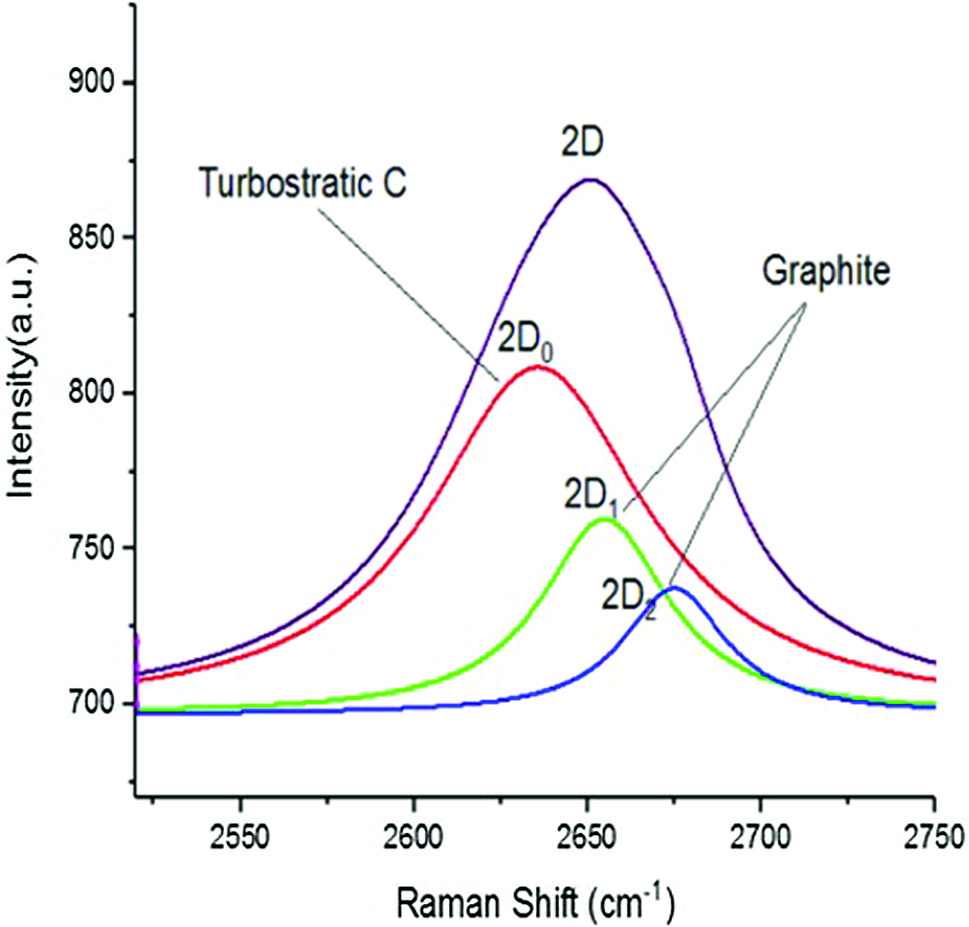https://doi.org/10.1140/epjd/s10053-023-00755-w
Regular Article – Atomic Physics
The influence of Compton electrons on the rearrangement of carbon atoms in graphite: new evidence from the analysis of 2D Raman band
1
Instituto Superior de Tecnologías y Ciencias Aplicadas (InSTEC), Universidad de La Habana, Ave. Salvador Allende No. 1110, Plaza de la Revolución, 10400, Havana, Cuba
2
Centro de Estudios Avanzados de Cuba, Ministerio de Ciencia, Tecnología y Medio Ambiente (CITMA), 17100, Havana, Cuba
3
Centro de Aplicaciones Tecnológicas y Desarrollo Nuclear (CEADEN), Ministerio de Ciencia, Tecnología y Medio Ambiente (CITMA), 11300, Havana, Cuba
Received:
25
April
2023
Accepted:
3
September
2023
Published online:
4
October
2023
In the present investigation, Raman spectroscopy is used to study the modifications caused by Compton electrons, originated by gamma quanta of  Co on the crystalline structure of graphite. The samples were irradiated in a dose range between 40 and 160 kGy. The analysis of the Raman spectra allowed to corroborate the electrons that occur at these radiation doses are able of causing appreciable modifications in the graphite structure. These modifications have a complex dependence of radiation dose due to the concurrence of the “radiational damage” and “radiational annealing” processes. The analysis of the fine structure of the Raman 2D band shows that the effect of the Compton electrons goes beyond the production of vacancy-interstitial pairs, since it leads to the modification of the disposition and stacking order of the plans in the structure of graphite.
Co on the crystalline structure of graphite. The samples were irradiated in a dose range between 40 and 160 kGy. The analysis of the Raman spectra allowed to corroborate the electrons that occur at these radiation doses are able of causing appreciable modifications in the graphite structure. These modifications have a complex dependence of radiation dose due to the concurrence of the “radiational damage” and “radiational annealing” processes. The analysis of the fine structure of the Raman 2D band shows that the effect of the Compton electrons goes beyond the production of vacancy-interstitial pairs, since it leads to the modification of the disposition and stacking order of the plans in the structure of graphite.
Copyright comment Springer Nature or its licensor (e.g. a society or other partner) holds exclusive rights to this article under a publishing agreement with the author(s) or other rightsholder(s); author self-archiving of the accepted manuscript version of this article is solely governed by the terms of such publishing agreement and applicable law.
© The Author(s), under exclusive licence to EDP Sciences, SIF and Springer-Verlag GmbH Germany, part of Springer Nature 2023. Springer Nature or its licensor (e.g. a society or other partner) holds exclusive rights to this article under a publishing agreement with the author(s) or other rightsholder(s); author self-archiving of the accepted manuscript version of this article is solely governed by the terms of such publishing agreement and applicable law.





